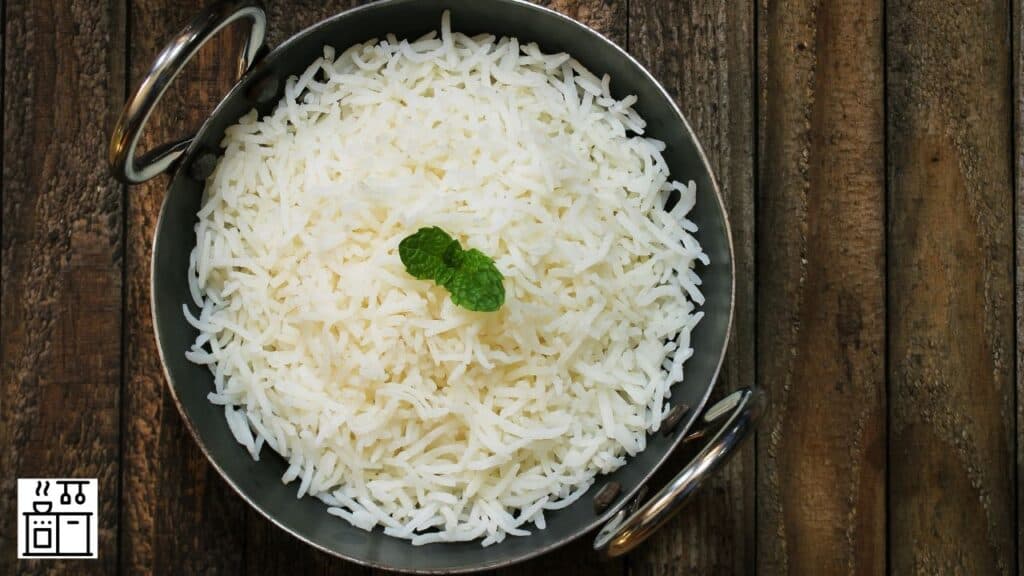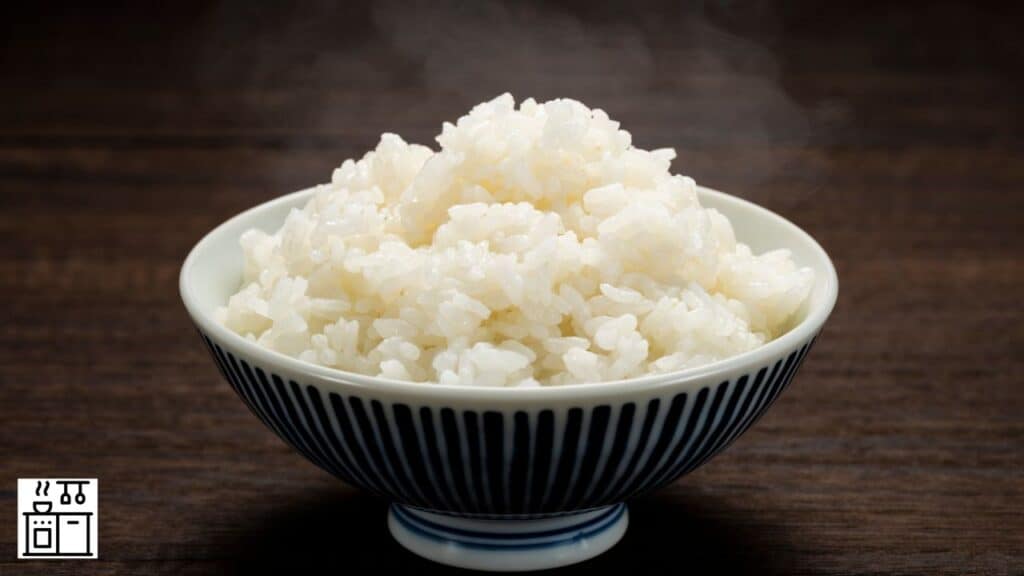A rice cooker is a handy kitchen appliance that makes rice perfectly every time.
You simply have to add rice and water to the cooking pot and switch on the rice cooker. The appliance does the rest of the work. But can you make rice without a rice cooker?
Let’s find out.
Different Ways to Make Rice Without A Rice Cooker
There are several ways to make rice without a rice cooker. Some of them involve the use of special appliances or kitchen utensils.
Here are the most common methods.
1. Stovetop Method
This is the traditional and simplest way to make rice. To prepare rice on the stove, you need a large cooking pot with a tight-fitting lid.
Given below are the steps to cook rice using this method:
- Measure the required amount of rice. Wash and rinse it thoroughly to get rid of dust and dirt. This process will also remove excess starch from the grains.
- Depending on the type of rice, measure an adequate amount of water for cooking the rice. Add the water and rice to the pot and place it on the stove.
- Wait for the water to boil. Then, reduce the heat, cover the pot with the lid, and let it simmer for 15 to 20 minutes. During this time, the rice grains will absorb the water and grow big.
- Once the rice cooks, take it off the stove.
- If there is excess liquid, drain it. Then, fluff the grains with a spatula or fork. This will help the grains separate and expand in size.
2. Microwave Method
The microwave method is another simple way to cook rice. It takes less time than the stovetop method.
To make rice in a microwave, you need a microwave-safe bowl. Rinse the rice in cold water, drain it, and add it to the cooking bowl.
Add the desired amount of water and cover with plastic wrap.
Microwave the rice for about 10 to 15 minutes till it absorbs all the water.
Once the rice is cooked, gently fluff the grains with a fork to separate them.
3. Oven Cooking
Rice is not traditionally cooked in a conventional oven. Nevertheless, it’s possible.
For this method, follow the below steps:
- Start by rinsing and washing the rice to get rid of the excess starch.
- Then, add the rice, water, and salt to the oven dish and cover it with a lid.
- Preheat the oven to 375°F.
- Place the rice in the oven and bake for 18 to 20 minutes until all the water is absorbed and the rice is cooked.
4. Pressure Cooker Method
Like the rice cooker, the pressure cooker is another kitchen appliance that makes it easy to cook rice.
It works on the principle of building pressure inside a closed compartment and cooking the ingredients in a liquid.
The settings will differ for each pressure cooker. Read the instruction manual to find the correct setting and measure of water for the type of rice.
The process is as follows:
- Wash and rinse the rice thoroughly.
- Measure the accurate amount of water according to the type of rice you choose for cooking.
- Add the rice and water to the pressure cooker.
- Close the lid and cook on high pressure for five minutes.
- Release the pressure manually and wait till there is no more steam to open the lid.
- Fluff the rice with a fork, and it’s ready to serve.
How to Make Perfect Rice Every Time Without A Rice Cooker?

It’s easy to cook rice perfectly if you take care of a few factors.
Here are some ways to improve the results regardless of the method you use to make rice.
1. Rinse the Rice Well
There are two main purposes of rinsing the rice grains before cooking.
Firstly, it gets rid of any dirt or dust that is stuck on the grains. This ensures that the rice you cook is clean and edible.
Secondly, rinsing helps to remove the excess starch. Too much starch can make the rice grains sticky.
When the grains are sticky, the rice tends to clump together after cooking.
However, starch dissolves in water. So, rinsing rice two to three times will help to get rid of excess starch from the grains.
To do this properly, place the rice grains in a mesh vessel or colander. Add water to the grains and squish and swirl them around.
The water will turn cloudy because of the starch content.
You can drain it away and repeat it a few more times to leave the rice with just enough starch.
2. Soak the Rice
Most types of rice benefit from soaking. Soaking helps the grains absorb water and increase in size. It helps the rice cook faster.
However, check the package instructions before soaking the rice. Certain delicate varieties of rice, like jasmine rice, don’t need soaking.
3. Stir the Rice a Little at The End
In the pressure cooker method of cooking, it’s not possible to open the lid and stir the contents during the cooking process.
But if you are making rice on the stovetop, microwave, or oven, it’s helpful to stir the rice during the cooking process.
Stirring the rice distributes the moisture that remains and makes all the rice gain an even texture.
4. Customize the Amount of Water According to The Type of Grain
Different types of rice cook differently. So their water requirements also vary. Getting the rice-to-water ratio correct is crucial for good results.
It can take some trial and error according to the type of cooking method employed as well.
Check the label instructions to find out how much water to use for each type of grain to cook it perfectly every time.
5. Customize the Cooking Time
Just like the rice-to-water ratio varies for each type of rice, the cooking time also differs according to the method of cooking.
Preparing rice on the stove usually takes longer than pressure cooking and the microwave method.
So you can’t rely on the same timing for all types of rice. The cooking time will mostly be mentioned on the packaging for different cooking methods.
If it’s not available, you may have to keep a close watch to ensure that the rice doesn’t overcook or remain uncooked.
Adjust the timing to make sure that it cooks just perfectly.
6. Let the Rice Rest After Cooking
After the rice has cooked, it’s important to let it rest for a few minutes before serving.
When you leave it to rest with the lid on, the rice will absorb any remaining moisture.
It will help the grains cook completely and have a better texture.
7. Use High-Quality Rice
Good quality rice produces better results. Those with grains of uneven size can result in uneven cooking.
So the texture of the rice after cooking will be unattractive. To avoid this problem, choose good-quality rice with grains of the same size.

